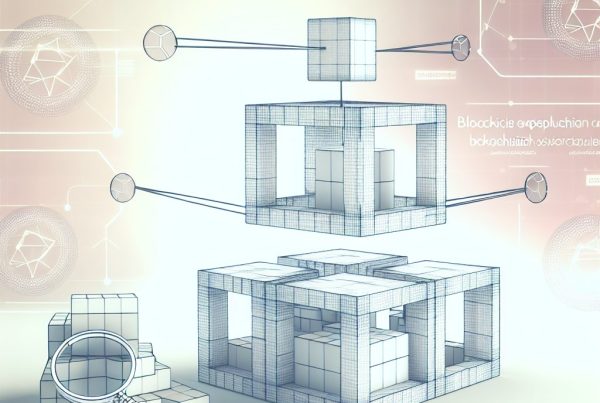What Is EIP-1559 and How It Works
The Ethereum Improvement Proposal 1559, commonly referred to as EIP-1559, represents a significant evolution in the Ethereum blockchain’s transaction fee mechanism. Introduced in August 2021 as part of the London Hard Fork, EIP-1559 aims to enhance the user experience by making transaction fees more predictable and efficient. This article delves into the intricacies of EIP-1559, its operational mechanics, and its implications for the Ethereum ecosystem.
Understanding EIP-1559
EIP-1559 fundamentally alters how transaction fees are calculated and paid on the Ethereum network. Prior to its implementation, users had to bid for transaction priority by setting gas prices, leading to unpredictable fees, especially during periods of high network congestion. EIP-1559 introduces a dual fee structure that includes a base fee and a tip, streamlining the process and enhancing user experience.
The Dual Fee Structure
Under EIP-1559, every transaction consists of two main components:
- Base Fee: This is a mandatory fee that is dynamically adjusted based on network demand. The base fee is burned, meaning it is removed from circulation, which can potentially reduce the overall supply of Ether (ETH).
- Tip: Users can include an optional tip to incentivize miners to prioritize their transactions. This tip is paid directly to the miners and is not burned.
This dual structure aims to create a more predictable fee environment while also addressing the issue of network congestion. The base fee adjusts automatically based on the network’s current load, ensuring that users are not overpaying during peak times.
How EIP-1559 Works
The mechanics of EIP-1559 can be broken down into several key processes:
1. Base Fee Calculation
The base fee is calculated based on the network’s congestion level. If the network is busy, the base fee increases; if it is underutilized, the base fee decreases. This adjustment occurs in increments of 12.5% per block, allowing for gradual changes that prevent sudden spikes in transaction costs.

2. Fee Burning Mechanism
One of the most notable features of EIP-1559 is the burning of the base fee. By removing ETH from circulation, this mechanism introduces a deflationary aspect to the Ethereum economy. As more transactions occur, more ETH is burned, potentially increasing the value of the remaining supply.
3. User Experience Enhancement
With EIP-1559, users can see the estimated base fee for their transactions before they confirm them. This transparency allows users to make informed decisions about how much they are willing to pay, reducing the anxiety associated with fluctuating gas prices.
Benefits of EIP-1559
The implementation of EIP-1559 brings several advantages to the Ethereum ecosystem:
- Predictability: Users can better estimate transaction costs, leading to a more user-friendly experience.
- Reduced Congestion: The dynamic adjustment of the base fee helps manage network congestion more effectively.
- Deflationary Pressure: The burning of the base fee can lead to a decrease in the total supply of ETH, potentially increasing its value over time.
- Incentivized Miners: The inclusion of tips ensures that miners remain incentivized to process transactions, even as the base fee is burned.
Challenges and Criticisms
Despite its benefits, EIP-1559 has faced criticism and challenges:
- Miner Revenue: Some miners have expressed concerns that the burning of the base fee could lead to reduced revenue, as they rely on transaction fees for their income.
- Complexity: The new fee structure may be confusing for some users, particularly those who are new to cryptocurrency.
- Network Congestion: While EIP-1559 aims to reduce congestion, it does not eliminate it entirely. During extreme spikes in demand, users may still experience high fees.
Real-World Impact of EIP-1559
The introduction of EIP-1559 has had tangible effects on the Ethereum network and its users. For instance, during periods of high demand, the base fee has effectively managed to stabilize transaction costs compared to the previous auction-style system. In the months following its implementation, Ethereum saw a significant increase in the amount of ETH burned, leading to discussions about Ethereum’s potential transition to a deflationary asset.
Moreover, platforms like OpenSea and Uniswap have adapted to the new fee structure, allowing users to better manage their transaction costs. This adaptability showcases the resilience of the Ethereum ecosystem and its ability to evolve in response to user needs.
Future of EIP-1559 and Ethereum
As Ethereum continues to develop and transition to Ethereum 2.0, the implications of EIP-1559 will likely evolve. The shift to a proof-of-stake consensus mechanism will further impact transaction fees and network efficiency. The combination of EIP-1559 and Ethereum 2.0 could lead to a more scalable and user-friendly platform, attracting even more users and developers to the ecosystem.
FAQs about EIP-1559
What is the main purpose of EIP-1559?
The main purpose of EIP-1559 is to improve the transaction fee mechanism on the Ethereum network, making fees more predictable and reducing congestion during peak times.
How does EIP-1559 affect transaction fees?
EIP-1559 introduces a base fee that adjusts dynamically based on network demand, along with an optional tip for miners. This structure aims to stabilize transaction costs and enhance user experience.
What happens to the base fee in EIP-1559?
The base fee is burned, meaning it is removed from circulation, which can contribute to a deflationary effect on the supply of Ether (ETH).
Are miners negatively impacted by EIP-1559?
Some miners have expressed concerns about reduced revenue due to the burning of the base fee. However, they can still earn tips from users who want to prioritize their transactions.
Will EIP-1559 eliminate high transaction fees?
While EIP-1559 aims to reduce transaction fees and improve predictability, it does not completely eliminate high fees during extreme network congestion.
Conclusion
EIP-1559 marks a pivotal moment in the evolution of the Ethereum blockchain, addressing long-standing issues related to transaction fees and network congestion. By introducing a dual fee structure that includes a base fee and a tip, EIP-1559 enhances user experience while also introducing a deflationary mechanism through the burning of fees. As Ethereum continues to grow and adapt, the implications of EIP-1559 will play a crucial role in shaping its future.
For the latest updates on cryptocurrency news and price tracking, consider visiting Bitrabo. Stay connected with me on social media: follow me on X, Instagram, and Threads.
Disclaimer: This article is for informational purposes only and should not be considered financial advice. Always conduct your own research before making investment decisions.
The Crypto Watchlist of the Week 🔎
Subscribe to receive expert-curated projects with real potential—plus trends, risks, and insights that matter. Get handpicked crypto projects, deep analysis & market updates delivered to you.


